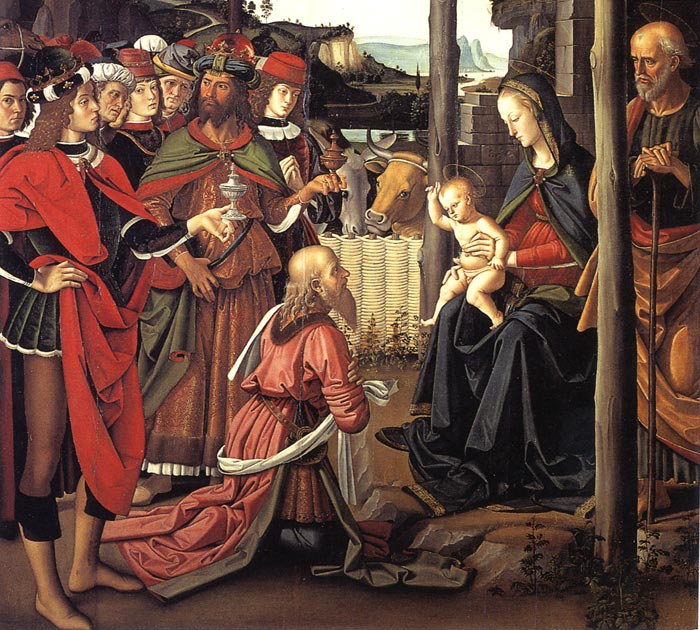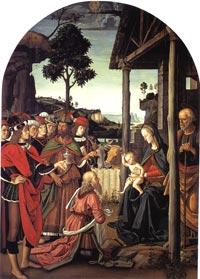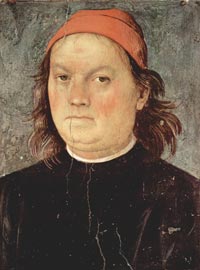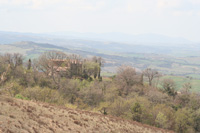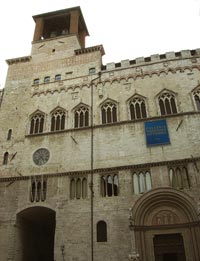Pietro Perugino | The Adoration of the Magi (Epiphany) |
| The Adoration of the Magi is a painting by the Italian Renaissance painter Pietro Perugino, housed in the Galleria Nazionale dell'Umbria of Perugia, Italy. |
The scene follows a standard layout, with the nativity hut on the right and the visitors' procession, developing horizontally, on the left. On the background, behind the ox and the donkey, is a rocky, hilly landscape painted using aerial perspective. |
||
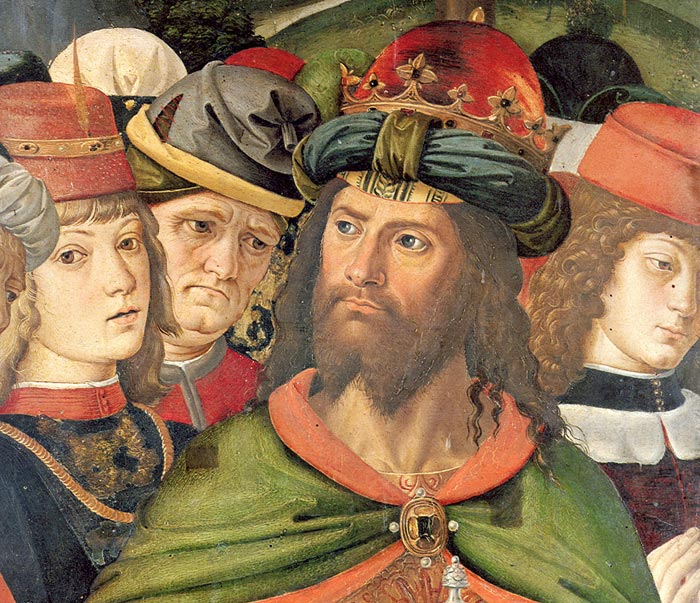 |
||
Perugino, The Adoration of the Magi (detail), 1470 - 1473 o al 1476 circa, olio su tela, Galleria nazionale dell'Umbria, Perugia |
||
[1] Contemporaries regarded Perugino as one of the leading painters in Florence in the 1480s and as the "best master in Italy" in 1500, but soon afterward his reputation suffered a decline from which it has only partly recovered. The grounds for this criticism, then as now, is the formulaic quality of his work, in particular his tendency to repeat figure types or even whole compositions again and again. He was also head of a very large workshop, which, operating for a time in both Florence and Perugia, turned out innumerable devotional pictures and frescoes in his distinctive style. Perugino's most famous pupil was, of course, Raphael.
Several of the artist's works are on display in Città della Pieve, including The Adoration of the Magi (1504) in the Oratory of Santa Maria dei Bianchi. The story is presented as a great procession of horsemen that disappears into the distant and vast andscape conceived by Il Perugino. One can recognise, even though it is stylised, the view that Città della Pieve has of the Trasimeno Lake.
|
||||
|
||||
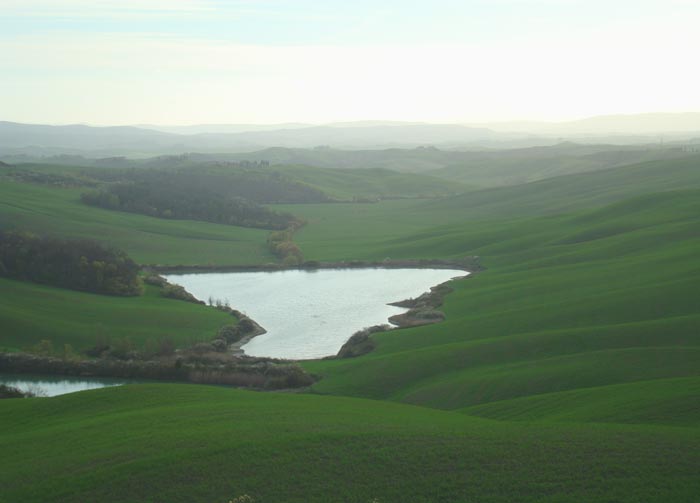 |
||||
Podere Santa Pia seemsto be the ideal choice for those seeking a peaceful, uncontaminated environment |
||||
|
||||
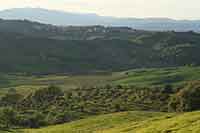 |
||||
Podere Santa Pia |
Podere Santa Pia, garden |
Century-old olive trees, between Podere Santa Pia and Cinigiano |
||
| La Galleria Nazionale Umbria |
||||
| The Palazzo dei Priori houses some of the best museums in Perugia. The foremost art gallery in Umbria is the stunning Galleria Nazionale dell’Umbria, entered from Corso Vannucci. It’s an art historian’s dream, with 30 rooms of artwork dating back to Byzantine-like art from the 13th century, as well as rooms dedicated to works from hometown heroes Pinturicchio and Perugino. The Galleria Nazionale dell'Umbria is the Italian national paintings collection of Umbria, housed in the Palazzo dei Priori, Perugia, in central Italy. Its collection comprises the greatest representation of the Umbrian School of painting, ranging from the 13th to the 19th century, strongest in the fourteenth through sixteenth centuries. The collection is presented in twenty-three galleries in the Palazzo. The origins of the collection lie in the founding of the Perugian Accademia del Disegno in the mid-16th century. The Academy had its original seat in the Convento degli Olivetani at Montemorcino, where a collection of paintings and drawings began to be assembled. With the suppression of religious houses imposed by the Napoleonic administration, and imposed once again by the united Kingdom of Italy, much of the heritage of Italian art that had come to be the property of the Church became the property of the State. In 1863, the civic paintings collection was formally named to commemorate Pietro Vannucci, but the problem of establishing an appropriate site to house the collection was not solved until 1873, when it came to be housed on the third floor of the Palazzo dei Priori, in the center of Perugia. With the addition of acquisitions, donations and bequests, the pinacoteca became the Regia Galleria Vannucci in 1918, under the patronage of the king Galleria Nazionale dell'Umbria
|
|
|||
| This article incorporates material from the Wikipedia article Pietro Perugino and Adorazione dei Magi (Perugino Perugia) published under the GNU Free Documentation License. Wikimedia Commons has media related to Adorazione dei Magi (Perugino Perugia). |
||||

